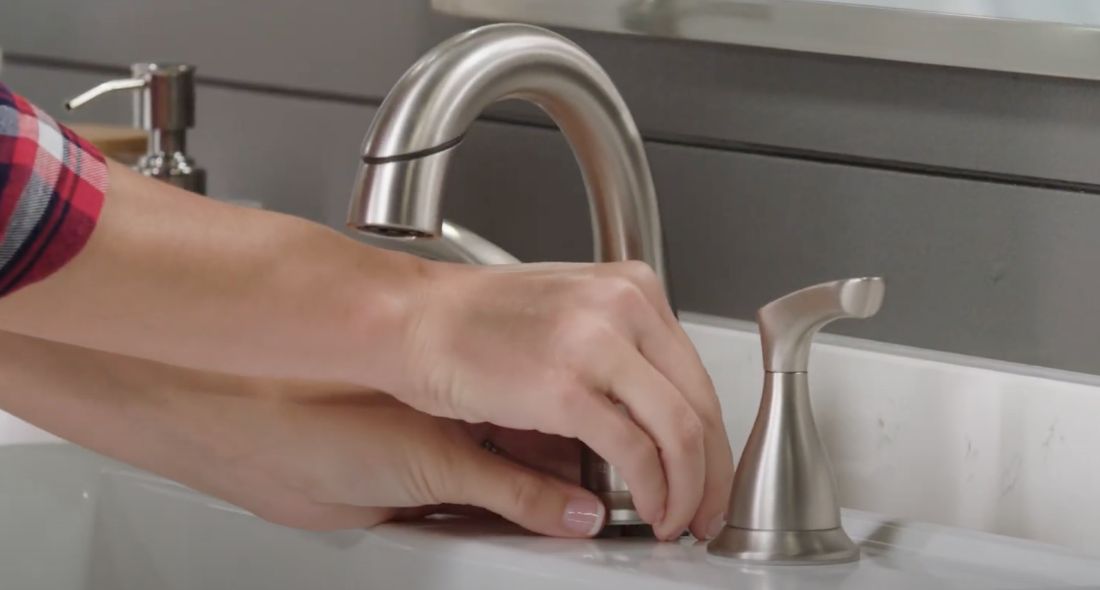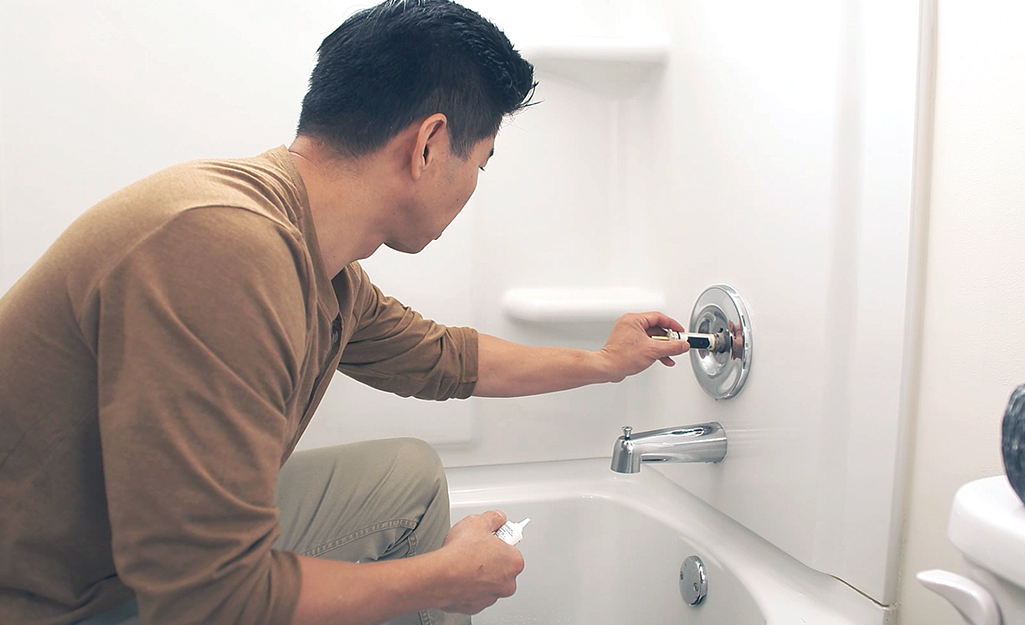When It's Mandatory to Resolve a Faulty Faucet
When It's Mandatory to Resolve a Faulty Faucet
Blog Article
Every person is bound to have their personal way of thinking about What Causes Leaky Faucets & How To Fix Them.

Dripping taps could seem like a small aggravation, yet their effect surpasses simply the nuisance of the noise. From wasting water to sustaining unneeded financial costs and health and wellness threats, disregarding a trickling faucet can bring about different effects. In this short article, we'll delve into why it's critical to address this usual home concern quickly and properly.
Wastage of Water
Ecological Impact
Dripping taps add considerably to water wastage. According to the Environmental Protection Agency (EPA), a solitary tap dripping at one drip per second can squander greater than 3,000 gallons of water per year. This not only pressures water resources however also impacts ecological communities and wild animals based on them.
Step-by-Step Overview to Dealing With a Dripping Faucet
Tools Required
Before trying to deal with a leaking tap, collect the required tools, including a flexible wrench, screwdrivers, replacement components (such as washing machines or cartridges), and plumber's tape.
Typical Faucet Issues and Their Solutions
Identify the sort of tap and the particular issue creating the drip. Typical troubles consist of worn-out washing machines, rusty shutoff seats, or defective O-rings. Refer to manufacturer guidelines or on-line tutorials for step-by-step assistance on repair work.
Financial Costs
Increased Water Expenses
Past the environmental influence, leaking taps can inflate water costs substantially. The gathered wastage in time converts right into higher utility costs, which can have been avoided with timely repair services.
Possible Home Damages
Additionally, long term trickling can bring about harm to components and surface areas surrounding the faucet. Water accumulation can cause discoloration, deterioration, and also structural issues if left unattended, resulting in added repair service expenses.
Health Concerns
Mold And Mildew and Mold Growth
The continuous presence of dampness from a leaking faucet develops a suitable environment for mold and mildew and mildew development. These fungi not just compromise interior air top quality but additionally position wellness risks, specifically for individuals with respiratory system problems or allergies.
Waterborne Illness
Stagnant water in dripping faucets can become a breeding ground for bacteria and various other virus, raising the threat of waterborne illness. Pollutants such as Legionella bacteria thrive in stationary water, possibly bring about severe health problems when ingested or inhaled.
Do it yourself vs. Expert Repair
Advantages and disadvantages of DIY Repair Service
While some may try to repair a dripping tap themselves, DIY repairs include their own set of challenges. Without appropriate expertise and tools, DIY efforts can worsen the problem or result in insufficient repairs, prolonging the trouble.
Advantages of Employing an Expert Plumber
Working with an expert plumber makes certain that the underlying cause of the dripping faucet is resolved efficiently. Plumbers possess the expertise and devices to detect and fix faucet problems successfully, conserving time and minimizing the danger of additional damages.
Ecological Responsibility
Private Contribution to Preservation
Taking obligation for dealing with trickling taps straightens with more comprehensive efforts towards water preservation and environmental sustainability. Every person's activities collectively make a considerable influence on maintaining priceless resources.
Sustainable Living Practices
By prioritizing prompt repair services and taking on water-saving habits, individuals contribute to sustainable living methods that benefit both existing and future generations.
Safety nets
Routine Maintenance Tips
To stop leaking taps, execute routine upkeep such as cleansing aerators, evaluating for leaks, and replacing damaged components without delay. Furthermore, consider mounting water-saving devices or updating to extra reliable fixtures.
Importance of Prompt Fixes
Addressing trickling taps as soon as they're discovered stops additional water wastefulness and possible damages, inevitably conserving both water and cash over time.
Effect On Home Worth
Understanding of Well-Maintained Home
Preserving a residential property in good condition, consisting of dealing with maintenance concerns like trickling taps, improves its viewed value and worth among potential buyers or renters.
Influence on Resale Worth
Properties with well-maintained plumbing components, including faucets, command greater resale worths in the realty market. Dealing with trickling taps can contribute to a favorable perception throughout building assessments and negotiations.
Verdict
Dealing with a trickling faucet surpasses mere comfort; it's an important action towards preserving water, decreasing monetary prices, and protecting wellness and residential or commercial property. Whether with do it yourself repairs or professional help, doing something about it to fix leaking faucets is a little yet impactful method to advertise responsible stewardship of resources and contribute to a healthier, a lot more lasting future.
Why Are My Faucets Dripping (And Can I Fix it Myself)?
Causes of a Dripping or Leaking Faucet
Whether you’re hearing drops of water falling and hitting a sink, or noticing water ooze out from the base of the spout, you shouldn’t ignore a dripping or leaking faucet. And, the good news is, sometimes you can fix the problem yourself.
In this article, we’ll review a few common causes of dripping and leaky. We’ll also walk you through some basic ways to find the problem and handle it without calling anyone — and let you know when to call in a pro.
But, no matter what the cause, or whether you can handle it on your own, the sooner you address it, the better.
Each drip may be a tiny amount of water. But, they all add up quickly. According to the U.S. Geological Survey, one faucet losing one drop every 20 seconds — five a minute — wastes around a liter of water every day, and 173 gallons a year.
Add in more than one in your house, and it’s a lot of water to waste. So, we’ll help you get to the bottom of things quickly.
Four Reasons Your Faucet May Be Dripping
Aerator is Damaged or Unseated Valve Seat is Corroded O Ring is Loose or Worn Out Part of the Assembly is Loose Aerator is Damaged or Unseated
If you unscrew the end of your faucet, you’ll find the aerator. It’s the little stem piece with a screen on it that shuts off the water circulation.
If it’s damaged, or if it’s not sitting right, it will allow water to pass through.
Valve Seat is Corroded
Next is the valve seat, which is connected to the washer. If the washer wasn’t in place correctly, then it could have ground against the seat. Over time, this damages the valve seat.
The problem could also be corrosion: Over time, the part has worn out, and it’s now allowing water to pass through.
O Ring is Loose or Worn Out
Since the o ring is only a small rubber gasket, it’s a common reason why the faucet is dripping. You’ll find it at the base of the faucet, and it’s there to keep water from coming out where it’s not supposed to.
However, it’s common for the o ring to wear out over time. When it does, you’ll notice a drip.
Part of the Assembly is Loose
So far, we’ve looked at a few small, specific parts. But, the problem could be anywhere in the assembly if something’s out of place.
Even if a part isn’t damaged, over time, it may have become loose or dislodged. It could be the parts we mentioned, or the aerator at the tip of the faucet, the stem itself,
Can I Fix a Leaky Faucet Myself?
Depending on the problem, and how handy you are, there’s a chance you can fix a leaky faucet without calling a professional. But, you do run the risk of making the problem worse.
If it’s a small drip, you can certainly try a few troubleshooting tactics. We’ll walk you through them in a moment.
But, no matter what, your first step should be shutting off the water coming into the faucet. You should find a shutoff valve under the sink on the pipes leading to it. Turn each one clockwise until they close tightly.
Next, make sure you have the right tools for whatever you’re attempting. It’s tempting to make do with what you have. But, you need the right ones for a reason: You’re often dealing with small parts that can break if you handle them carelessly.
If you’re feeling confident, here are some places to start.
Items Near the Tip of the Faucet
A few of the parts we mentioned — particularly the valve seat and washer — are located at the tip of the faucet where the water comes out. They’re easy to access, making it a good place to start.
Check the O Ring
To check the o ring, you’ll need to take off the spout at the base. It’s easiest on kitchen sinks with long spouts, versus the smaller, bulkier base on most bathroom sinks.
Either way, this can be tricky, so do it carefully and don’t force anything. If it’s not coming right off, you’re much better off calling in a pro than possibly breaking something.
For a kitchen sink, there’s usually a nut or coupling assembly at the base of the spout. These often slide off easily without using any tools.
Once you’ve disassembled those parts, gently but forcefully twist off the spout.
Then, you can see the o rings. There should be two of the rubber gaskets on the base. If they look worn or damaged, replace them, and see if that solves the problem.

We had been made aware of that editorial about Why Are My Faucets Dripping (And Can I Fix It Myself)? from a friend on another blog. Enjoyed our entry? Please quickly share it. Help other people find it. Thanks a lot for going through it.
Report this page